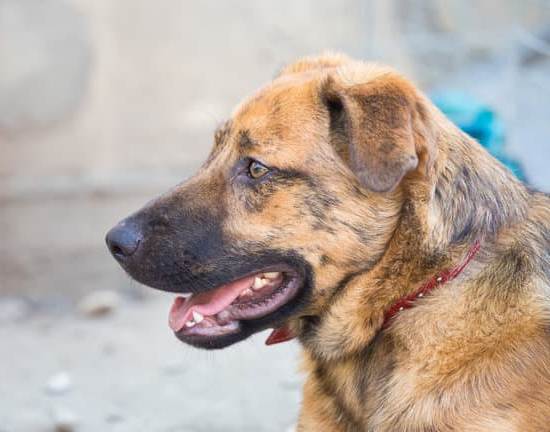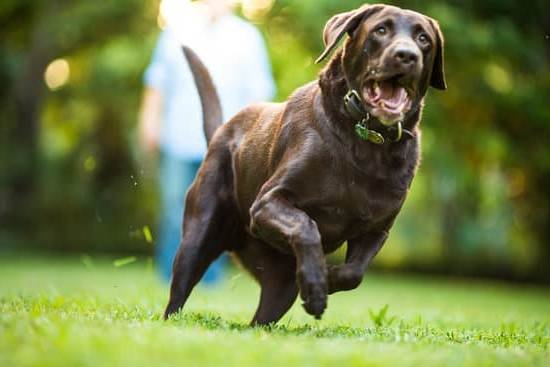Training your dog to jump high can be an exciting and rewarding endeavor for both you and your furry friend. Not only does it enhance your dog’s physical fitness and agility, but it also strengthens the bond between you and your pet. In this article, we will explore the various aspects of training your dog to jump high, including assessing their physical capacity, implementing jumping drills, addressing safety precautions, and troubleshooting common challenges.
Assessing Your Dog’s Physical Capacity and Fitness Level is crucial before embarking on any high-jump training regimen. It is important to ensure that your dog is in good health and physical condition to perform jumping exercises safely. Additionally, basic obedience training serves as a foundation for high-jump training, as it establishes control and discipline essential for mastering jumping techniques.
Positive reinforcement and reward-based training methods are essential in motivating your dog to engage in high-jump exercises. By utilizing these techniques, you can encourage your dog to put forth their best effort in each training session.
The implementation of jumping drills and exercises will help build strength and agility in your dog, allowing them to achieve impressive heights with ease. As you progress in training, incorporating height and distance progression will further challenge your dog while ensuring continuous improvement.
Assessing Your Dog’s Physical Capacity and Fitness Level
Understanding Your Dog’s Natural Abilities
Before embarking on a high jumping training program for your dog, it’s important to assess your dog’s natural abilities and fitness level. Take note of their breed, age, and physical condition. Some breeds are naturally more inclined to excel in jumping activities, while others may require more conditioning and training. It is also crucial to consider any pre-existing medical conditions or physical limitations that may affect your dog’s ability to jump safely.
Consulting With a Professional Trainer or Veterinarian
To ensure the safety and well-being of your dog, consider consulting with a professional trainer or veterinarian to assess your dog’s physical capacity for high jumping. A thorough physical examination can help identify any potential health issues that may need to be addressed before engaging in rigorous jumping exercises. Additionally, a professional trainer can provide valuable insights into tailoring a training program that aligns with your dog’s individual needs and abilities.
Gradually Building Endurance and Stamina
Regardless of your dog’s natural abilities, it is essential to gradually build their endurance and stamina through regular exercise and conditioning. This will not only prepare them for the physical demands of high jumping but also reduce the risk of injury. Incorporating activities such as walking, running, and swimming can help improve your dog’s overall fitness level and contribute to their success in jump training.
By first assessing your dog’s physical capacity and fitness level, you can lay a strong foundation for their high jumping training journey. Remember to prioritize safety and consult with professionals if needed as you prepare your furry companion for this exciting endeavor.
Basic Obedience Training as a Foundation for Jumping Exercises
Establishing Basic Commands
Before venturing into high jump training, it is crucial to ensure that your dog has a strong foundation in basic obedience commands. Commands such as “sit,” “stay,” and “come” are essential for your dog to understand and follow before attempting any jumping exercises. A well-trained dog will be more receptive to learning new skills and will have a better understanding of what is expected during jump training sessions.
Building Trust and Focus
Obedience training also helps in building trust and focus between you and your furry friend. Through consistent obedience training, your dog learns to listen and respond to your cues, which is beneficial when teaching them how to jump safely and effectively. Additionally, a dog that trusts its owner is more likely to approach new challenges, such as learning how to jump high, with confidence.
Incorporating Clicker Training
One effective method for teaching obedience commands is through positive reinforcement techniques such as clicker training. By using a clicker to mark desired behaviors followed by a reward, you can effectively communicate with your dog and reinforce good behavior. This method can be especially useful in laying the groundwork for high jump training, as it creates a positive association with following commands and learning new skills.
By focusing on basic obedience training as the initial step in preparing your dog for high jumping exercises, you are setting the stage for success in their training journey. Once your furry companion has mastered these foundational skills, they will be ready to progress onto more advanced jumping drills and exercises. Remember that patience, consistency, and positive reinforcement are key elements in this process of empowering your dog to reach new heights in jump training.
Utilizing Positive Reinforcement and Reward-Based Training Methods
Training your dog to jump high can be an exciting and rewarding endeavor. Utilizing positive reinforcement and reward-based training methods is crucial in achieving success in this area. By using these methods, you can effectively motivate and encourage your dog to reach new heights while building a strong bond with them.
One effective way to implement positive reinforcement is by using treats. When your dog successfully completes a jumping exercise or drill, immediately reward them with a tasty treat. This will create a positive association with the activity and encourage them to continue improving their jumping skills. Additionally, verbal praise and physical affection are also powerful tools for reinforcing desired behaviors in your dog.
Incorporating reward-based training methods into your jump training routine can help make the process enjoyable for both you and your dog. By focusing on positive reinforcement, you can boost your dog’s confidence and enthusiasm for jumping while fostering a harmonious relationship based on trust and cooperation. Below are some examples of reward-based training methods that can help you train your dog to jump high:
- Using treats as rewards for successfully completing jumps
- Offering verbal praise and encouragement during training sessions
- Incorporating playtime as a form of reward for good performance
Implementing Jumping Drills and Exercises to Build Strength and Agility
Once you have established a solid foundation of basic obedience training for your dog, it is time to start implementing jumping drills and exercises to build their strength and agility. These exercises are essential for preparing your dog to jump high with ease and confidence. Here’s how to train your dog to jump high through effective jumping drills and exercises.
One of the most popular exercises for building strength and agility in dogs is using agility equipment such as hurdles, tunnels, weave poles, and platforms. Training your dog to navigate these obstacles will not only improve their physical fitness but also enhance their coordination and mental focus. Start with low hurdles or platforms at first, gradually increasing the height as your dog becomes more adept at clearing them.
In addition to agility equipment, incorporating activities like fetch, tug-of-war, and running alongside your bike can also help improve your dog’s overall athleticism and conditioning. By engaging in these activities regularly, your dog will develop the muscle strength, endurance, and cardiovascular fitness needed to excel in high jumping. Consistency is key in these exercises – regular practice will yield significant improvement over time.
Lastly, consider enrolling your dog in a formal agility or competitive obedience class where they can receive professional guidance on how to train for high jumps. Expert trainers can provide personalized coaching tailored to your dog’s unique strengths and weaknesses, ensuring that they reach their full potential in jumping ability.
| Jumping Drills | Benefits |
|---|---|
| Hurdles exercise | Improves strength and coordination |
| Tug-of-war game | Builds muscle strength |
| Agility classes | Professional guidance for optimal training |
Incorporating Height and Distance Progression in Training
Training your dog to jump high involves a gradual progression in height and distance to ensure that your furry friend develops the necessary strength and agility. Just like human athletes, dogs need time to build up their muscles and coordination for jumping at higher levels.
It is important to keep in mind that not all dogs are built for high jumping, so it’s essential to assess your dog’s physical capacity and fitness level before starting any high jump training.
To start incorporating height and distance progression in your dog’s training, begin with low hurdles or obstacles that are easy for your dog to navigate. As your dog becomes more comfortable with these lower heights, gradually increase the height of the obstacles.
It’s crucial to observe your dog’s body language and behavior during each training session to ensure that you are not pushing them too hard or too fast. This gradual progression will help prevent injuries and build confidence in your dog as they conquer each new height.
Positive reinforcement is key in this type of training. Whenever your dog successfully jumps over an obstacle at a new height or distance, be sure to reward them with praise, treats, or their favorite toy. This will reinforce the behavior you want from them and motivate them to continue improving their jumping skills. Remember that patience and consistency are essential when training your dog to jump high, so celebrate every small achievement along the way.
| Obstacle Height/Distance | Training Stage |
|---|---|
| 6 inches | Initial Training |
| 12 inches | Intermediate Training |
| 18 inches | Advanced Training |
By following these steps and being attentive to your dog’s individual needs, you can effectively train them to jump higher while ensuring their safety and well-being throughout the process.
Addressing Safety Precautions and Injury Prevention for High Jumping
When training your dog to jump high, it’s crucial to prioritize safety and injury prevention. Just like any other physical activity, jumping exercises can pose certain risks if not approached with caution. In this section, we will address the importance of safety precautions and provide tips on how to minimize the risk of injury during high jump training.
One of the first steps in ensuring safety during jump training is to assess your dog’s physical condition and fitness level. It’s essential to consult with a veterinarian to rule out any underlying health issues that may impact your dog’s ability to jump. Additionally, it’s important to gradually build up your dog’s strength and agility through basic obedience training and conditioning exercises before introducing high jumps.
When implementing jumping drills and exercises, it’s important to use proper equipment such as sturdy and stable obstacles or agility equipment designed for dogs. Avoid using objects that may cause strain or injury to your dog’s joints or muscles. It’s also crucial to ensure that the training surface is safe and free from any hazards that could lead to slips or falls.
Furthermore, incorporating height and distance progression in your training regimen should be done gradually and in accordance with your dog’s individual abilities. Pushing your dog beyond their limits can result in overexertion or injury.
By being mindful of these safety considerations, you can create a positive and safe environment for your dog to develop their jumping skills while minimizing the risk of accidents or injuries. Overall, prioritizing safety will not only prevent potential harm but also contribute to building a strong foundation for successful high jump training for your furry friend.
Troubleshooting Common Challenges and Issues in Training a Dog to Jump High
Training a dog to jump high can be a fun and rewarding experience, but it’s not without its challenges. In this section, we will address some common issues that may arise during the training process and provide tips on how to troubleshoot them effectively.
One common challenge when training a dog to jump high is getting them to overcome their fear or hesitation. Some dogs may be naturally cautious or nervous about jumping obstacles, especially at greater heights. To address this issue, it’s important to start with low obstacles and gradually increase the height as your dog gains confidence. Patience and positive reinforcement are key in helping your dog overcome their fears and feel comfortable tackling higher jumps.
Another issue that may arise is improper technique or form when jumping. Dogs may struggle with coordinating their movements to effectively clear an obstacle, leading to frustration for both the handler and the dog. To troubleshoot this issue, focus on basic obedience training and reinforcing good jumping form through consistent practice. Using visual aids such as markers or targets can also help guide your dog’s approach and takeoff, improving their overall jumping technique.
Lastly, some dogs may experience physical strain or fatigue when attempting high jumps, especially if they are not adequately conditioned for the activity. It’s important to assess your dog’s fitness level and gradually build up their strength and agility through targeted exercises and drills. Implementing a well-rounded fitness regimen that includes strength training, flexibility exercises, and cardiovascular conditioning can help prevent injuries and improve your dog’s overall performance in high jump training.
By addressing these common challenges with patience, consistency, and proper guidance, you can overcome obstacles in training your dog to jump high and make progress towards achieving new heights together. Success in high jump training often comes down to building a strong foundation of trust, communication, and physical conditioning between you and your canine companion.
Showcasing Success Stories and Inspiring Training Tips From Experienced Dog Handlers
Training a dog to jump high can be a fun and rewarding experience for both you and your furry friend. By incorporating the right techniques and methods, you can elevate your training sessions and witness impressive results over time. Experienced dog handlers have valuable insights and inspiring success stories that can serve as motivation and guidance for your own training journey.
To help you on this endeavor, here are some success stories and tips from seasoned dog handlers:
- Consistency is key: Successful dog handlers emphasize the importance of consistency in training. This means setting aside regular practice sessions to work on jumping exercises with your dog. Whether it’s a few times a week or daily sessions, maintaining a consistent training schedule can yield significant improvements in your dog’s jumping abilities.
- Patience pays off: Rome wasn’t built in a day, and neither are high-jumping dogs. Patience is crucial when training your dog to jump high. It’s essential to remain patient with your pet as they progress at their own pace. With persistent and patient training, even the most hesitant dogs can develop confidence in their jumping skills.
- Build trust and rapport: Establishing a strong bond of trust between you and your dog is fundamental to successful high-jump training. Experienced handlers emphasize the significance of positive reinforcement, praise, and rewards during training sessions. By creating a positive association with jumping exercises, you can motivate your dog to perform at their best.
By following these tips from seasoned dog handlers, you can better understand how to train a dog to jump high effectively. Their success stories serve as inspiration for novice trainers looking to elevate their own techniques and strategies for achieving remarkable results with their canine companions. Whether it’s through consistency, patience, or building trust, these insights can empower you to take your dog’s jumping abilities to new heights.
Conclusion
In conclusion, training your dog to jump high can be incredibly beneficial for both you and your furry companion. Not only does it provide a great physical workout, but it also strengthens the bond between you and your dog. By incorporating the right techniques and exercises, you can help your dog develop strength, agility, and confidence. With patience, consistency, and the use of positive reinforcement, you can empower your dog to reach new heights in jump training.
Assessing your dog’s physical capacity and fitness level is crucial before embarking on any jump training regimen. It’s important to start with basic obedience training as a foundation for jumping exercises to ensure that your dog understands commands and can follow instructions. Utilizing positive reinforcement and reward-based training methods will motivate your dog to perform well and make the learning process enjoyable for both of you.
As you implement jumping drills and exercises to build strength and agility in your dog, be sure to gradually incorporate height and distance progression in their training routine. This incremental approach will help minimize the risk of injury while challenging your dog to improve their jumping abilities over time.
Remember to always prioritize safety precautions and injury prevention for high jumping by ensuring that your training environment is suitable for such activities. Overall, with proper guidance and dedication from both you and your dog, reaching new heights in jump training is certainly achievable.
Frequently Asked Questions
Why Can’t My Dog Jump High?
Some dogs may not be able to jump high due to physical limitations or lack of conditioning. Certain breeds are not predisposed to jumping, while others may have joint issues that limit their ability.
What Is the Command for a Dog to Jump?
The command for a dog to jump is typically “jump” or “leap.” It’s important to pair the verbal command with a visual cue, such as pointing or holding an object for the dog to jump over, to reinforce the behavior.
What Age Do Dogs Learn to Jump?
Dogs can start learning to jump at a young age, usually around 3-4 months old when they are developing coordination and strength. However, formal training for jumping should wait until the dog is fully grown and their growth plates have closed to prevent injury.

Welcome to the blog! I am a professional dog trainer and have been working with dogs for many years. In this blog, I will be discussing various topics related to dog training, including tips, tricks, and advice. I hope you find this information helpful and informative. Thanks for reading!





